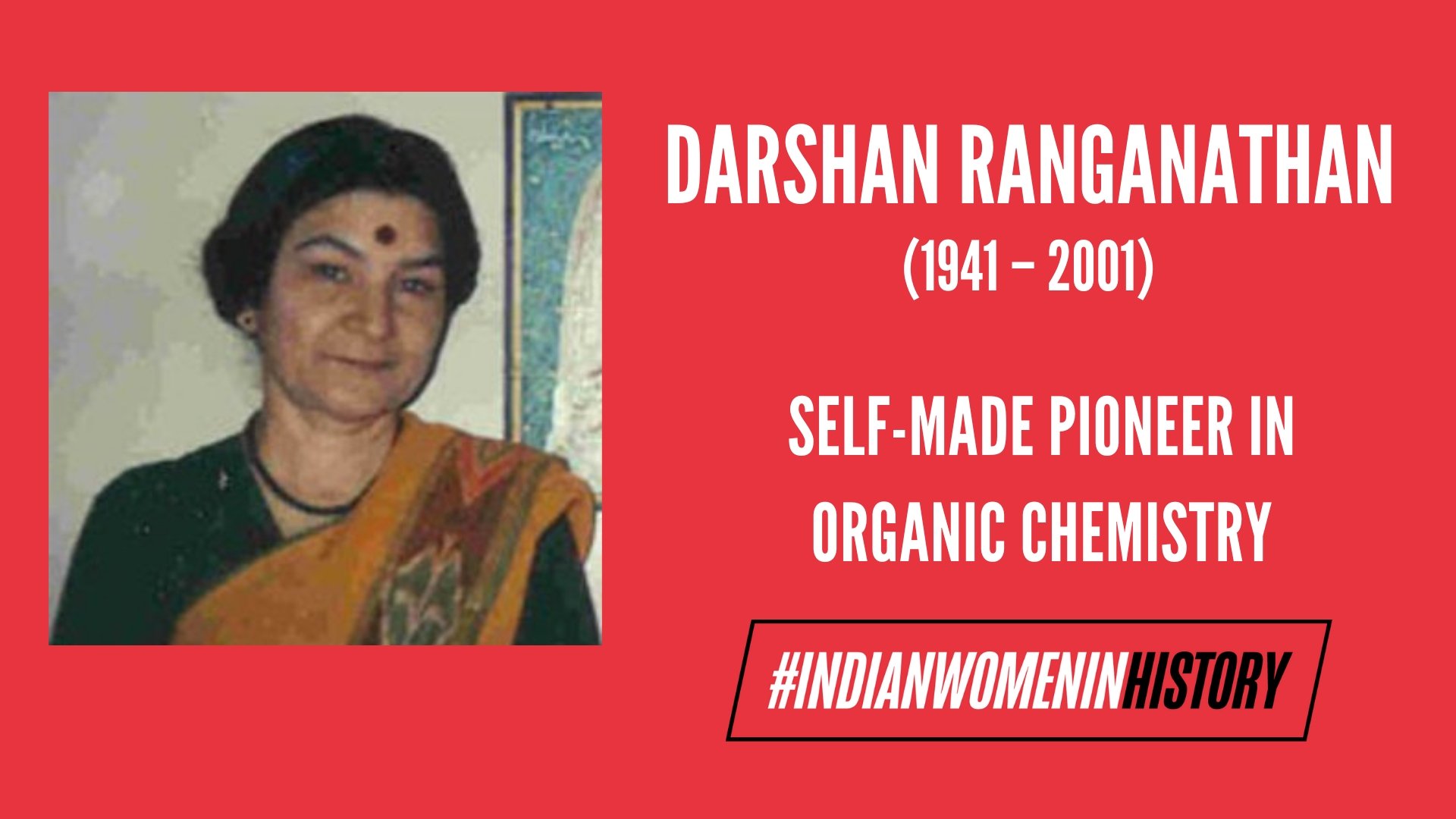This article is a part of the #IndianWomenInHistory campaign for Women’s History Month to remember the untold legacies of women who shaped India, especially India’s various feminist movements. One Indian woman is profiled each day for the whole of March 2019.
It has been a popular belief in India that the fields of science, technology, engineering and mathematics (STEM) are only for men to find success in. One of the many women who defied this and to solely fund her own research was Darshan Ranganathan.
Early Life and Education
Darshan was born on 4 June 1941 to Vidyavati Markan and Shanti Swarup in Delhi where she finished her schooling and graduate studies. She received her PhD in organic chemistry from Delhi University under the supervision of T. R. Seshadri who was at that time heading the research. Due to her perseverance and excellence in the academic field, she won the prestigious Senior Research Scholarship of the Royal Commission which gave her the financial means to conduct postdoctoral work at Imperial College London with Professor D.H.R. Barton.
The fact that Darshan had to join as a research fellow under her husband even though her genius exceeded his, reflects the sexist state of the administration in Indian academics
During her time in London, her work revolved around organic natural products and was specifically focused on the structural elucidation of cycloartenol from jackfruit. Dr. Barton, her superior, wanted to study the actual structure and stereochemistry of cycloartenol but was not able to do so due to the lack of jackfruits in London. Darshan, along with her contributions in research, was able to ship jackfruits from her hometown to London with the help of her mother.
Career
After commencing her work in London and attaining a teaching position in one of the colleges in Delhi University, she met Dr Subramania Ranganathan in the Indo-Soviet Binational Conference on Natural Products held in Delhi in 1970. They later got married and she joined IIT Kanpur as a research fellow. The reason why someone, as accomplished as
Also read: Kamala Sohonie: First Indian Woman To Get A PhD In Science | #IndianWomenInHistory
The fact that Darshan had to join as a research fellow under her husband even though her genius exceeded his, reflects the sexist state of the administration in Indian academics and makes us wonder about the external power relations that are generated after two people get married. Society (in this case, the administration) took the burden of implementing social norms so that the woman would not be able to be on the same level as the man. However, it did not deter her from her research and she eventually funded her work with the help of multiple research fellowships.
she singlehandedly funded her research work as well as lecture tours through the several fellowships that she received over the years.
Her marriage,

However, her most important collaboration was with Isabella L. Karle of the Laboratory for the Structure of Matter, Naval Research Laboratory of USA at Washington DC. The most fascinating aspect of this professional relationship was that these two remarkable women collaborated for over 7 years and published two dozen papers together but never met each other in person.
Awards
Darshan was elected to the fellowship of the Indian Academy of Sciences in 1991 after which she joined the Regional Research Laboratory, Trivandrum in 1993. In 1996, she received another fellowship from the Indian National Science Academy, and two years later became the director of the renowned Indian Institute of Chemical Technology in Hyderabad. She funded her European lecture tour by the Jawaharlal Nehru Birth Centenary Visiting Fellowship. She received the prestigious Third World Academy of Sciences Award (TWAS) in Chemistry in 2000 (Tehran, Iran), for ‘her outstanding contributions to bio-organic chemistry, particularly in supramolecular assemblies, molecular design and chemical simulations of key biological processes, as well as for designing hybrid peptides leading to a new class of cyclic receptors and membrane ion carriers.’
Illness
The first evident instance of her illness was during her acceptance speech in Tehran, but the discomfort was attributed to a problem in her respiratory tract. After an extensive check-up upon returning to Hyderabad, the doctor discovered that it was breast cancer, a secondary metastasis of the one she had earlier fought in 1997-1998. She had the constant support of her husband and son throughout before she took her last breath on June 4th.
Legacy
It can be undoubtedly said that Darshan Ranganathan was the most distinguished organic chemist of her times in India, with multiple publications in The Journal of the American Chemical Society, Journal of Organic Chemistry and many notable others. Though she was denied a position at IIT Kanpur at a point where it would have only boosted her contributions to the field of bio-organic chemistry, she singlehandedly funded her research work as well as lecture tours through the several fellowships that she received over the years. Due to her multiple achievements, work ethic and dedication to the field of organic chemistry, she will always be revered as an inspiration to women in STEM.
Also read: Maharani Chakravorty: One Of India’s Earliest Molecular Biologists | #IndianWomenInHistory
References
About the author(s)
Rashad is an over enthusiastic football fan who wishes to leave behind a more equal and human world. He also likes to think he's good at dancing.





Nicely done article